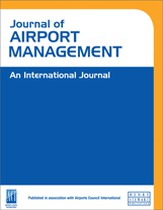Assessing physical climate risks at airports: A case study of Rome
Abstract
The paper explores the multifaceted risks posed by climate change to airport infrastructures and the strategic planning required to mitigate these risks. Climate change, driven by greenhouse gas (GHG) emissions, leads to increased global temperatures and extreme weather events, which significantly impact critical infrastructure systems, including airports The paper highlights the importance of addressing climate stress on infrastructure to ensure long-term sustainability. Airports are particularly vulnerable to weather-related disruptions, such as storms, sea level rise and changes in climatic patterns, which can affect operations and safety. The authors emphasise the need for systematic and comprehensive climate risk assessments, as recommended by international organisations like the United Nations and the European Union. Aeroporti di Roma (ADR) conducted a comprehensive climate risk assessment for its two airports, Leonardo Da Vinci in Rome-Fiumicino (FCO) and G. B. Pastine in Rome-Ciampino (CIA). The assessment involved screening relevant climate hazards, scoping critical assets and dynamic modelling of risks. The methodology used included the classification of climate-related hazards, analysis of past and future climate conditions and the development of a climate atlas for easy retrieval and graphical representation of data. The key results of the assessment were presented through a Hazard Assessment Atlas and an Assets Scorecard, which detailed the exposure, vulnerability, mitigation measures and risks for each asset. The mitigation measures identified were grouped into four main categories: design, integration/extension of control models, integration/ extension of monitoring and maintenance plans and infrastructure resilience. The paper concludes that the comprehensive climate risk assessment allowed ADR to develop a detailed understanding of the vulnerability and resilience of its airport infrastructures. This understanding enabled the preparation of a Climate Adaptation Plan, which includes short, medium and long-term mitigation measures to reduce the impact of risks and increase asset resilience. The plan is integrated into the Airport Development Plan and the ADR Business Plan.
The full article is available to subscribers to the journal.
Author's Biography
Lorenzo Rinaldi is Vice President, Risk Governance and Compliance for Aeroporti di Roma (ADR). Lorenzo graduated in electronic engineering and began his professional career in 2004 at Accenture, where he held increasingly senior positions, reaching the role of Executive Manager in the Finance and Performance Management area. In 2012, he became Senior Manager in the Risk Advisory Services sector at Ernst Young’s (EY) in projects in Italy and abroad for large multinationals. In 2015, he joined Thyssenkrupp Acciai Speciali Terni, first as Head of the Internal Control System and then as Chief Governance Officer. Since November 2020, he has been dealing with risk management, compliance and business resilience for Aeroporti di Roma.
Roberto Mezzalama is Senior Project Director at WSP Italia with over 30 years’ professional experience. He holds a BSc in natural sciences and an MSc in environmental engineering. Roberto started his career in the public sector where he held several positions in local and regional government, and then moved into consulting. He has worked on environmental and social impact assessment for infrastructure projects in over 20 countries in Europe, North America, Africa and Central Asia. He currently oversees the Italian team providing climate risk assessment services and has a contract position at the Turin University Master Course in environmental economics.
